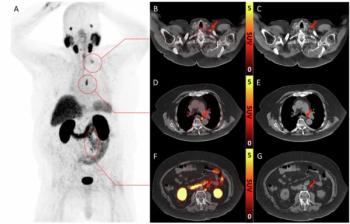
Pot smokers, schizophrenics show similar brain responses
Heavy use of marijuana may put adolescents who are genetically predisposed to schizophrenia at greater risk of developing the brain disorder, according to a study presented at the 2005 RSNA meeting.
Heavy use of marijuana may put adolescents who are genetically predisposed to schizophrenia at greater risk of developing the brain disorder, according to a study presented at the 2005 RSNA meeting.
Researchers used diffusion tensor imaging, which detects and measures the motion of water molecules in the brain, for the study. DTI can reveal microscopic abnormalities in the brain's white matter much earlier than detection of conventional structural changes.
Healthy white matter fibers carry water molecules in a restricted direction, called fractional anisotropy. When fibers become damaged through disease processes, water molecules are free to flow isotropically, or in many directions at once.
Manzar Ashtari, Ph.D., and colleagues at Zucker Hillside Hospital in Glen Oaks, NY, had previously shown with DTI that schizophrenia is associated with fractional anisotropy abnormalities of the frontal lobe. The current study described the impact of cannabis use on frontal white matter development.
DTI was performed on four groups:
- 12 healthy, early adolescent males compared with 12 late adolescent males to show normal human brain development
- 11 schizophrenic patients compared with 17 matched controls
- 15 schizophrenic patients who smoke marijuana compared with 17 matched controls
- 15 marijuana smokers compared with 15 matched nonusers
The researchers examined the arcuate fasciculus, a bundle of fibers connecting Broca's area in the left frontal lobe and Wernicke's area in the left temporal lobe of the brain. They found that repeated exposure to marijuana was related to abnormalities in the development of this fiber pathway, which is associated with the higher aspects of language and auditory functions.
"Because this language/auditory pathway continues to develop during adolescence, it is most susceptible to the neurotoxins introduced into the body through marijuana use," Ashtari said.
Schizophrenic patients showed abnormalities on DTI similar to those found in marijuana smokers. The researchers concluded that in addition to interfering with normal brain development, heavy marijuana use in adolescents may also lead to an earlier onset of schizophrenia in individuals who are genetically predisposed to the disorder.
Ashtari said that longitudinal studies are needed to determine whether these changes in the brain are permanent or change over time.
For more information from the Diagnostic Imaging archives:
Newsletter
Stay at the forefront of radiology with the Diagnostic Imaging newsletter, delivering the latest news, clinical insights, and imaging advancements for today’s radiologists.


























